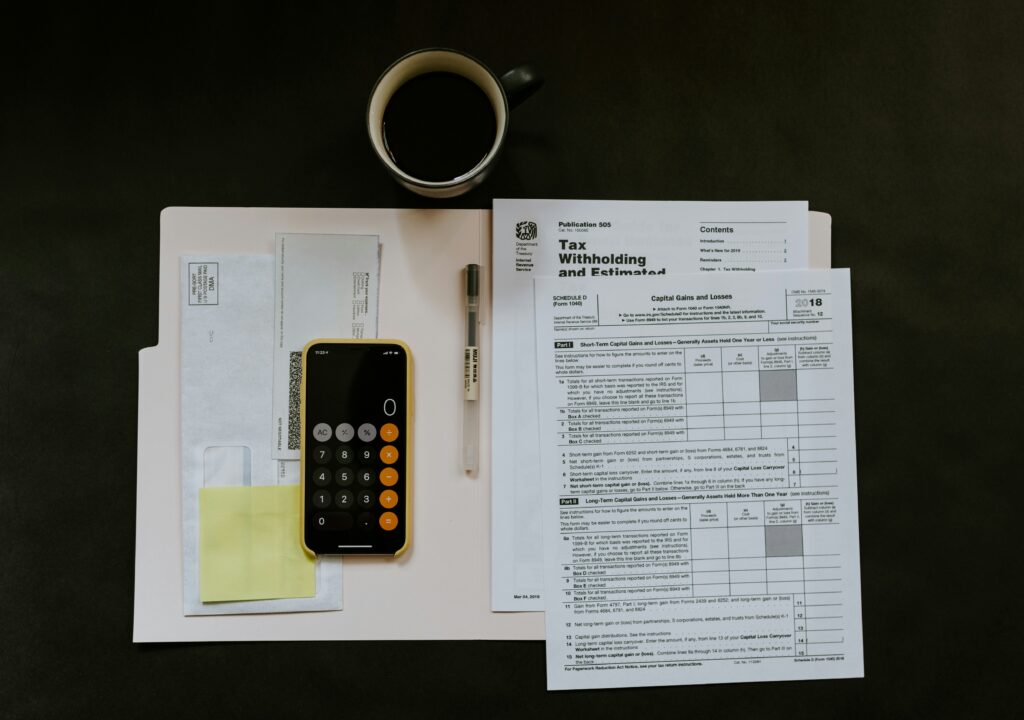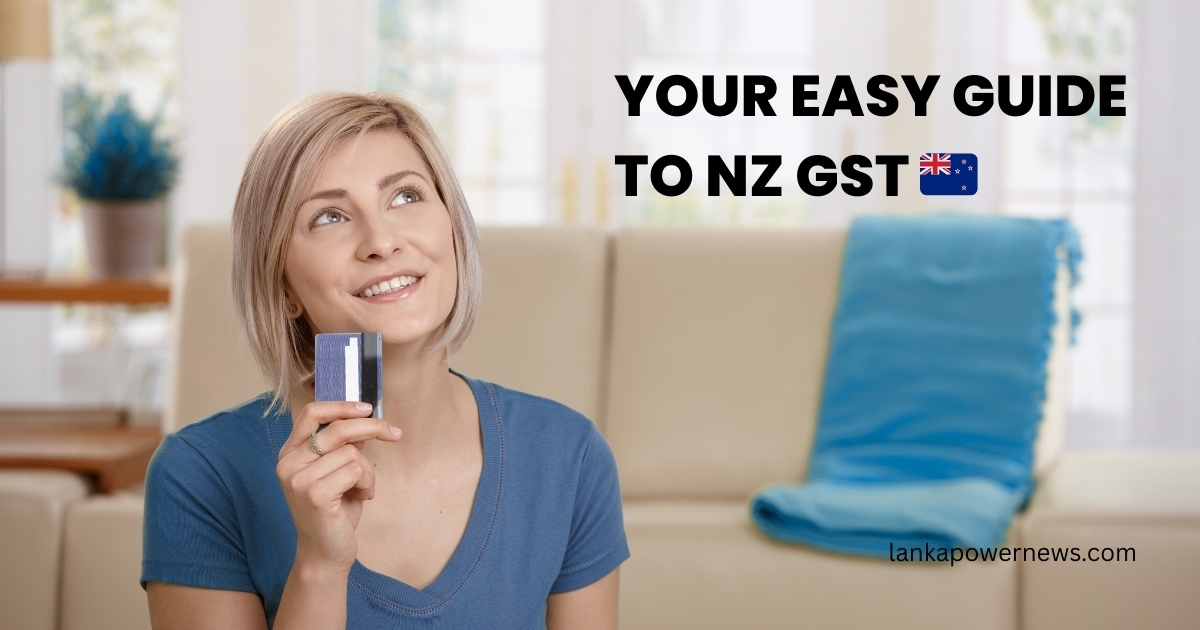GST in New Zealand Made Simple: Your Easy Guide to Rates, Registration, and Calculations
Whether you’re starting a side hustle, running a small business, or just trying to understand your receipts, Goods and Services Tax (GST) is a part of daily financial life in New Zealand. But let’s be honest, the term “tax” can make things sound complicated and intimidating.
You might be looking at a price and wondering, “How much of that is actually tax?” or “How do I add GST to my own prices?”
The good news? It’s much simpler than you think.
This guide will walk you through everything you need to know about GST in New Zealand using simple language and easy-to-follow steps. We’ll cover the current rate, show you two dead-simple ways to calculate it, and help you figure out if you even need to register for GST in the first place.

With the right tools and simple steps, managing your GST calculations doesn't have to be complicated.What Exactly is GST in New Zealand?
Think of GST as a 15% tax that’s added to the price of most goods and services sold in New Zealand.
When you buy a coffee, new shoes, or hire a plumber, that 15% is usually already built into the final price you pay. Businesses collect this GST from you (the customer) and then pass it on to the government’s Inland Revenue Department (IRD).
It’s a consumption tax, meaning it’s paid by the person consuming the product or service. For business owners, it’s something you collect on behalf of the government, not something you personally “pay” from your profits.
What is the Current GST Rate in New Zealand?
This one is easy to remember!
The GST rate in New Zealand is a flat 15%.
You’ll often hear prices described in two ways:
GST-Inclusive: This is the final price you see on a tag in a store. It means the 15% GST has already been included. Most retail prices are shown this way.
GST-Exclusive: This is the price before the 15% GST has been added. Businesses often use exclusive prices when dealing with other businesses.
Understanding the difference is the key to calculating GST correctly.
(Consider another image here: perhaps a simple graphic that shows a price tag with “$100 + GST” and another with “$115 GST Inclusive”.)
How to Calculate GST: The Simple Math, No Headaches
This is where people often reach for a calculator, and that’s perfectly fine! But understanding the basic maths can empower you to manage your finances better. Let’s break it down.

From traditional tools to modern methods, learning how to calculate GST can be straightforward.Method 1: Finding the GST Already Included in a Price
Ever looked at a receipt for $230 and wondered how much of that was tax? This is how you find the GST component of a GST-inclusive price. While you could divide the total by 1.15 and do some subtraction, here’s a wonderfully simple shortcut.
The “Multiply by 3, Divide by 23” Trick:
- Step 1: Take the total price (GST-inclusive).
- Step 2: Multiply this price by 3.
- Step 3: Divide that new number by 23.
The result is the exact GST amount that was included in the price.
Let’s use an example:
Imagine you bought a new office chair for $230.
- Step 1: Multiply the total price by 3.
$230 * 3 = $690 - Step 2: Divide the result by 23.
$690/ 23 = $30
That’s it! The GST component of your $230 chair was $30. This means the chair itself cost $200, and the GST was $30.
Method 2: Adding GST to a Price
This is what you’ll need to do if you’re a freelancer or business owner creating an invoice. You have your price for a service or product, and you need to add 15% GST on top.
This is even easier!
The “Multiply by 0.15” Formula:
- Step 1: Start with your GST-exclusive price (your price before tax).
- Step 2: Multiply that price by 0.15. This gives you the amount of GST to add.
- Step 3: Add the GST amount to your original price to get the final, GST-inclusive total.
Let’s use an example:
You’re a freelance graphic designer and you’ve completed a project for $500.
- Step 1: Multiply your price by 0.15 to find the GST amount.
$500 * 0.15 = $75 - Step 2: Add this GST amount to your original price.
$500 + $75 = $575
The total price you will put on the invoice is $575.
Pro-Tip: To get the final price in one step, you can simply multiply your price by 1.15.
$500 * 1.15 = $575.
Too Much Math? Use a GST New Zealand Calculator
While the calculations are simple once you get the hang of them, we don’t always have the time or mental energy to do math. That’s where a GST New Zealand Calculator comes in handy.
A quick search on Google for “NZ GST Calculator” will give you dozens of free tools. You simply type in the price, select whether it’s inclusive or exclusive, and the calculator does the work for you in an instant.
- Example: Calculate.co.nz
These tools are perfect for:
- Quickly checking numbers.
- Creating accurate invoices.
- Planning your business expenses and pricing.
Do I Need to Register for GST in New Zealand?
This is a crucial question for anyone earning their own income. You don’t just decide to start collecting GST; you need to officially register with the IRD.
You must register for GST if:
- You are a business, freelancer, contractor, or self-employed person, and;
- Your turnover (your total income before expenses) was more than $60,000 in the last 12 months, or is likely to be more than $60,000 in the next 12 months.
If you earn less than $60,000, you don’t have to register. This is great for people just starting out or running a small side hustle.
What about voluntary registration?
You can choose to register for GST even if you earn under the $60,000 threshold. Why would you do this? The main reason is so you can claim back the GST you pay on your business expenses (like laptops, software, tools, and materials). This could be a smart move, but it’s best to chat with an accountant first.
Connecting GST to Your Broader Financial Goals
Understanding GST isn’t just about tax compliance; it’s a fundamental piece of your financial literacy puzzle. How you manage GST can impact everything from your personal budget to your business’s growth potential.

- For Aspiring Entrepreneurs: If you’re exploring how to make money online, remember that as your income grows, you’ll need to plan for GST. Once you cross that $60,000 threshold, your pricing strategy will need to change to include the 15% tax, so it’s wise to plan for it from the start.
- For Small Business Owners: When you’re looking for ways to grow, you might ask, “What if you could get funding without giving away your business?” Lenders and investors will want to see clean, accurate financial records. Properly managing and reporting your GST is a sign of a healthy, well-run business, making you a much more attractive candidate for funding.
- For Everyday Kiwis: A clear grasp of GST is essential for understanding budgeting and financial goals. When you know that 15% of the price of many items is a tax, it can change your perspective on spending and help you make more informed decisions to tackle debt and build savings.
- For Investors: If you’re interested in building long-term wealth through assets, you might be looking into proven strategies for passive income in real estate. Be aware that GST rules for property transactions can be incredibly complex, especially for new builds or commercial properties. It is absolutely vital to get professional advice in this area.
Key Takeaways
Feeling more confident? Let’s recap the most important points:
- The Rate: The GST rate in New Zealand is 15%.
- Finding GST in a Price: Take the total price, multiply by 3, then divide by 23.
- Adding GST to a Price: Take your pre-tax price and multiply it by 1.15.
- Registration: It’s mandatory if you earn over $60,000 in a 12-month period.
- Easy Mode: When in doubt, a GST New Zealand Calculator is your best friend.
GST doesn’t have to be a source of stress. By understanding these simple concepts, you can take greater control of your finances, run your business more effectively, and make smarter decisions with your money.
Disclaimer: This article provides general information and should not be considered financial or tax advice. You should consult with a qualified accountant or tax professional for advice tailored to your specific situation.
Frequently Asked Questions (FAQ)
If you pass the $60,000 income threshold, you are legally required to register for GST. If you don’t register when you’re supposed to, the IRD may charge you penalties and interest on the GST you should have been paying. It’s always best to be proactive and register as soon as you think you will cross the threshold.
No, it doesn’t. The $60,000 threshold only applies to the income from your taxable activities (your business, side hustle, or freelance work). Your salary from a PAYE job where your employer handles the tax is not included in this calculation.
In many cases, yes! The IRD allows you to claim the GST on assets (like a computer or vehicle) that you owned and used for your business before you registered. There are specific rules around timing and documentation, so it’s a good idea to check the IRD website or ask an accountant for details.
Most businesses in New Zealand file their GST returns every two months. However, depending on the size of your business, you might be able to file every six months (if your turnover is low) or be required to file every month (if your turnover is very high). You choose your filing frequency when you register.
Generally, goods and services you export to customers outside of New Zealand are “zero-rated.” This means you charge them GST at a rate of 0%. You still include these sales in your GST return, and the benefit is that you can still claim back the GST you paid on any business expenses related to making those sales.
For amounts over $1,000, a proper tax invoice must show:
1. The words “Tax Invoice” clearly displayed.
2. Your business name and GST number.
3. The name and address of the person you are invoicing.
4. The date the invoice was issued.
5. A description of the goods or services.
6. The total amount including GST.








